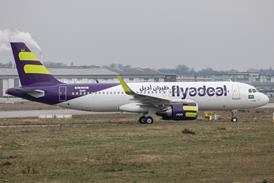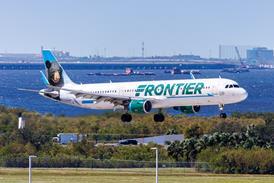PAUL LEWIS / WASHINGTON DC
The US Marine Corps is being given one more opportunity to prove that the troubled Osprey is safe and effective
Few aerospace developments have been as politically and technologically controversial as the Bell Boeing V-22 Osprey programme.
The US Marine Corps was recently given a final opportunity to put the troubled tiltrotor back in the air and prove to a number of influential government and industry sceptics that the machine is safe, reliable and operationally effective.
The V-22 has been grounded for more than a year while a succession of Blue Ribbon, Congressional, Judge Advocate General and NASA investigations and assessments turned the spotlight on virtually every aspect of the programme in the wake of two fatal crashes in 2000. The consensus was that the aircraft could be made to work and work well, but only once a series of fixable engineering discrepancies had been addressed.
"With all the things that were identified as being wrong, we created a resolution matrix cross- checking everything written and created a process to answer all those questions raised about the Osprey from aeromechanics down to wiring. We recognised that not everything could be done at once and that engineering changes needed to be done incrementally and so we have grouped them into a series of blocks," explains Col Dan Schultz, US Navy Air Systems Command (Navair) V-22 joint programme manager.
A restructured joint programme office, grouping Bell, Boeing and Navair under one roof at Patuxent River NAS, has mapped out a four-phase effort to not only fix and restore the V-22 to flight, but substantially improve the end product. The initial focus is on returning to flight test at Patuxent River from late April engineering and manu-facturing development (EMD) aircraft 8 and 10. These will be joined later by three low-rate initial production machines. Two modified CV-22 test tiltrotors at Edwards AFB, aircraft 7 and 9, will follow a month later.
Immediate safety of flight modifications include cleaning up cockpit warnings and cautions, taping up wire and line clamps to prevent chafing and installing new software. The latter will continue to evolve at Boeing's "triple laboratory" in Philadelphia, which links together a V-22 flight simulator, systems integration laboratory and ironbird hardware. "We've been able to check out a lot of software there and we plan to continue this for the next five years," says Schultz.
The five Patuxent River MV-22s will be used primarily for aeromechanical flight testing, with one dedicated to vortex ring state (VRS) tests. The two EMD CV-22s will resume flight testing of Special Operations Command mission equipment, starting with the ITT ALQ-211 integrated RF countermeasures suite and Raytheon APQ-186 terrain following/avoidance radar and including clearing the Osprey down to a 100ft (30m) altitude. Tests of the Northrop Grumman AAQ-24(v) directed infrared countermeasures system will follow.
High rate of descent testing will include evaluating VRS warning systems such as an aural message or a stick/seat shaker. Another possible solution is to develop an automatic flyout mode which would tilt the nacelles forward to increase airspeed and avoid blade stall. A similar flight control fix is being looked at to address pitch-up slideslip in helicopter mode when slowing to land in a wind from the forward quarter. Other aeromechanical phenomena identified by the various panels as in need of additional attention include lateral roll over deck during shipboard operations, formation flying and air-to-air refuelling.
"We're going to go put Xs in the outer envelope of this aircraft," states Schultz. "No other helicopter is going to have the amount of high rate of descent testing as the V-22 will…we're going to be setting a standard not set before. What we're going to have is an aircraft that is safe, operational and with all the Blue Ribbon panel recommendations and questions solved before we send VMMT-204 back into the air," he adds.
VMMT-204, the USMC's training squadron at MCAS New River, is due to restart flying from November next year. The unit will be equipped with new-build Block A standard MV-22s, incorporating re-routed and separated electrical wiring and hydraulic lines, which will also have a protective Corval rayon coating. The squadron is due to receive 12 MV-22s by late 2004, when it will reach an initial operational capability and start a second phase of operational evaluation.
The USMC is not now looking at a full rate production decision until the "2006/7 timeframe", but plans to continue ordering MV-22s at a minimum sustained production rate of around 10-12 machines per year subject to US Congressional funding. Ospreys coming off the line will be stored at Bell's Amarillo plant until they can be modified either to Block A or the planned follow-on Block B standard from 2005 onwards. The latter is intended to offer improved maintenance access through either re-designed clamshell nacelle doors or boroscope inspection technology.
A third, Block C, configuration pencilled in for 2007 will incorporate a range of operational enhancements, including a chin-mounted gun turret, a new telescopic inflight refuelling probe, improved environmental control system and possibly piezoelectric active blades to optimise proprotor twist for either helicopter or aircraft modes. "If this works we're talking about maybe a 3,000lb [1,350kg] payload increase and probably another 25-30kt [45-55km/h] in airspeed. We can already do 280kt and carry 15,000lb externally. Tell me someone else that can do that," says Schultz.
Source: Flight International























